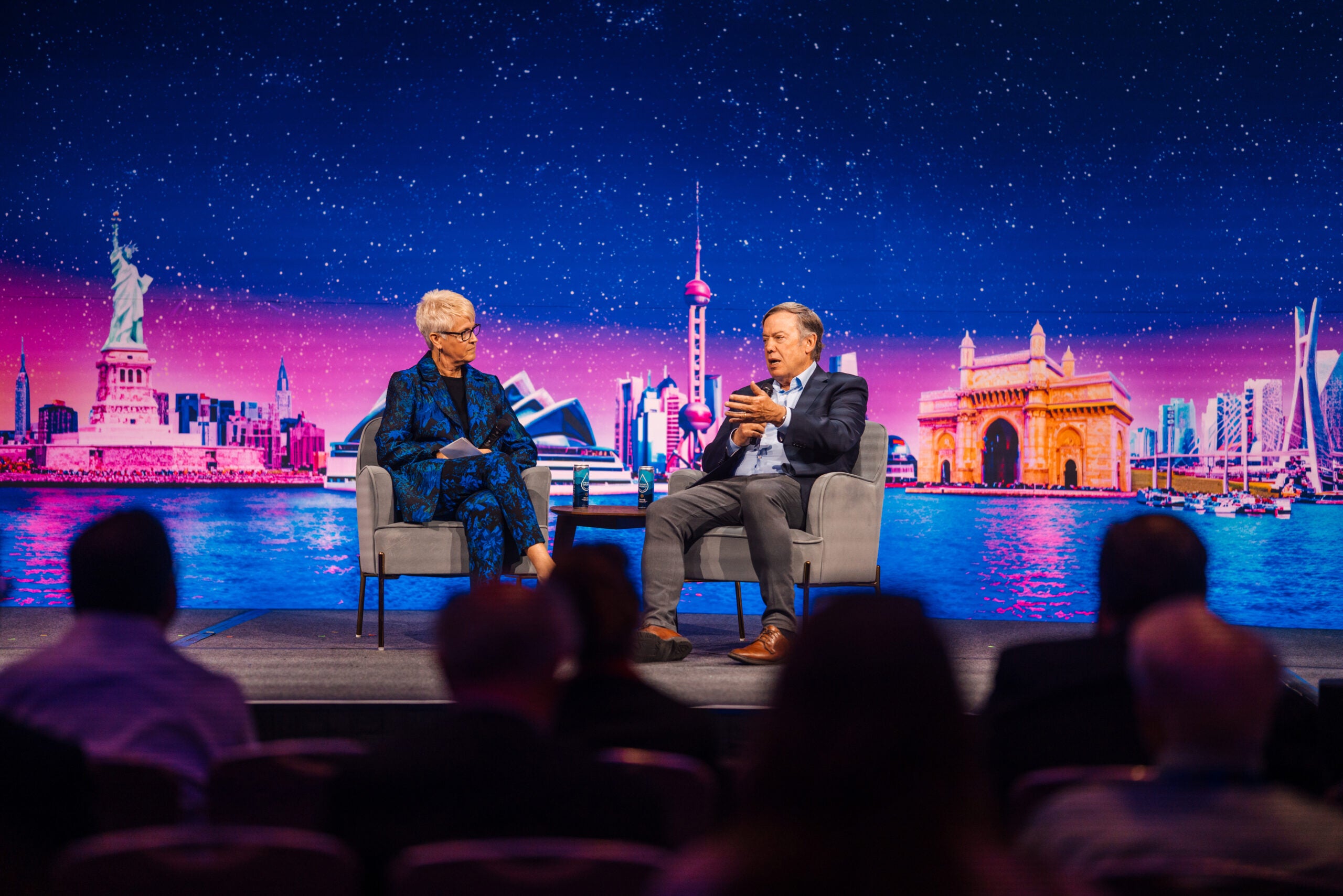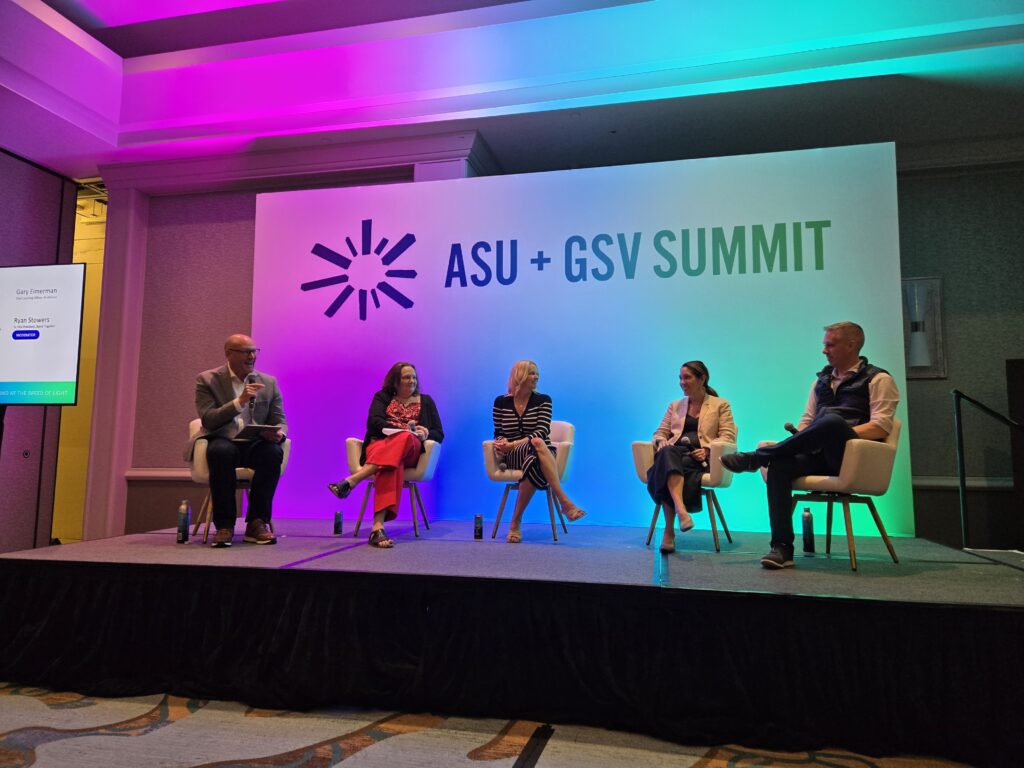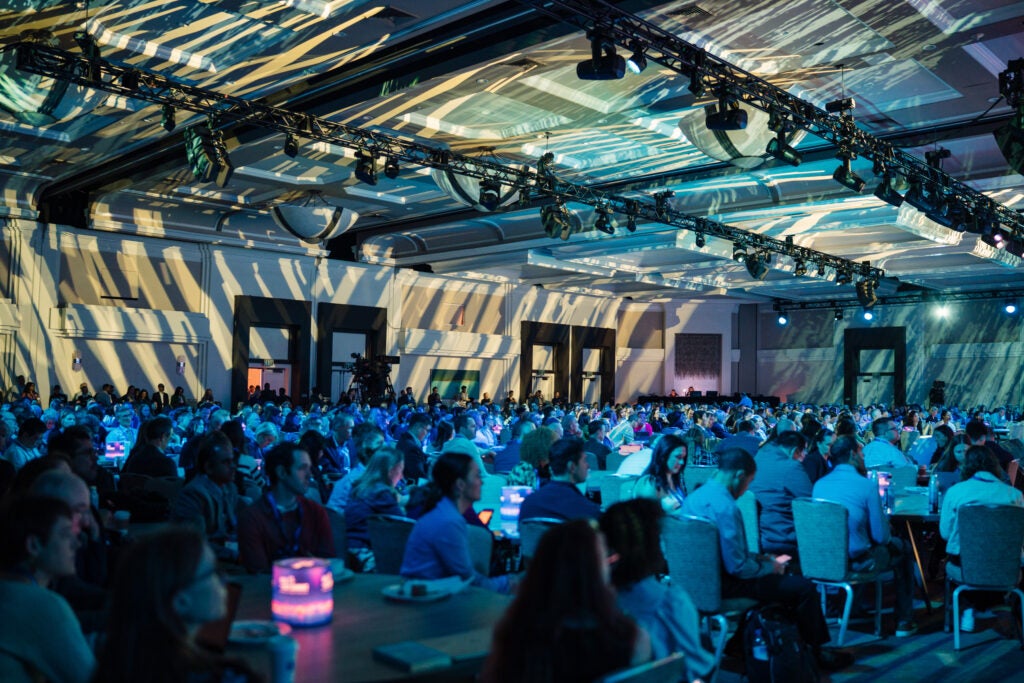Learning that works: How education is aligning with real lives and careers

Day two of ASU-GSV focuses on bridging education and opportunity in new contexts.
On April 7, the conversation at the 2025 ASU-GSV Summit zeroed in on a powerful throughline: learning works best when it aligns with real lives — and real jobs.
From the mainstage to breakout panels, leaders challenged traditional assumptions and asked a forward-looking question: Are we designing education for the world we live in now — or the one we wish we still had?
The answer came through loud and clear: it’s time to scale learning that meets people where they are, supports their goals and fits the complexity of their lives.
Takeaway 1: Work is the new classroom.
One thing is clear: education doesn’t have to come before a career. It can happen because of it.
In “America’s Employers: Engines to the Middle Class,” ASU advisor Maria Anguiano and Jobs for the Future’s Maria Flynn explored how employers — especially in fields like food service, trades and retail — are stepping up as educators. These companies aren’t just offering benefits. They’re building real learning infrastructure to support frontline workers’ growth.

Through gamification, AI personalization and immersive tools like VR, companies and universities are co-creating next-gen pathways that redefine what career mobility looks like.
Takeaway 2: Trust is the foundation of meaningful technology.
AI, learning analytics and digital platforms aren’t silver bullets. They’re scaffolding.
And if we want these tools to work, we have to anchor them in community trust, especially in contexts where access, health and education intersect. That message resonated powerfully in “Integrating Worlds: How Technology Bridges Education and Health for Early Learners.”
In a panel moderated by Larry Corio, associate director of ASU Learning Transformation Studios, speakers from ASU’s Edson College of Nursing and Health Innovation, College of Health Solutions and LA-based nonprofit Rising Communities underscored the urgent need for cross-sector partnerships — especially in communities where skepticism is earned and access is uneven. AI can help deliver accurate, relevant, bite-sized health and learning content, but only if the people creating it are also building trust, listening deeply and showing up.
Judy Karshmer, dean of Edson College of Nursing and Health Innovation shared: “Lifelong learning isn’t just a buzzword. It’s how we help people build the confidence, credentials and capacity to move forward.”
Building that confidence starts with meeting people where they are — a point underscored by Michelle Burton, CEO of Rising Communities. As she put it: “Stop discounting people’s concerns. Meet them where they are. Invite them into a safe space. Then talk about AI.”
Takeaway 3: Scale access through smarter, more integrated systems.
Patrick Rossol-Allison, associate vice president at ASU’s Learning Enterprise, joined peers from WGU, SNHU and others in “Lessons from National Scale Enterprise” to explore what it takes to create impact at scale. The shared insight: innovation and inclusion aren’t opposites — they’re allies. Success comes from systems built with learner needs at the center, not as an afterthought.

That theme carried into the afternoon session “AI and Learning Analytics: Unlocking the Future of Global Talent Development,” where Marco Serrato, vice president of ASU Learning Enterprise, led a global panel on how data and AI are reshaping talent development.
and Marco Serrato (ASU) share insights on AI. Photo by Aaron Ghena.
“AI is only as effective as the data that powers it,” Serrato noted. “And that data must come from many sources.”
Panelists emphasized that while AI tools exist, successful implementation requires shifts in culture, mindset and collaboration across sectors.
“Systems and analytics are a mirror of ourselves,” said Charla Griffy-Brown, dean of Thunderbird School of Global Management. “We have to ask who we want to be as these systems evolve — and design strategies that work with both human and nonhuman teams.”
The session also showed how AI can help people build human capabilities through low-stakes, adaptive practice. The takeaway? Scaling talent is as much about trust and design as it is about tech.
Takeaway 4: Make all experiences count.
If learning happens everywhere, why is so much of it still invisible?
That question fueled “New Credentialing Strategies That Make Experience Count,” where moderator Tom Vander Ark, partner and CEO at Getting Smart, and panelists explored how to surface skills gained through internships, caregiving, entrepreneurship and community work — experiences that rarely show up on transcripts but shape who learners are.
New tools like digital wallets, master transcripts and structured learner records are helping capture these skills in ways employers and colleges can recognize. But while business leaders are warming to skill-based hiring, HR departments often still default to degrees.
Still, momentum is building. As these tools evolve, they’re helping learners document what they’ve done — and making it easier for others to see what they’re capable of.
A movement takes shape: ASU launches the Changing Futures campaign
One of the most future-forward moments of the day came from the mainstage, where ASU President Michael Crow unveiled the Changing Futures campaign — a bold commitment to designing education that expands access, builds resilience and unlocks lifelong opportunity.
The premise is simple, but urgent: the future we need doesn’t yet exist — so we’re building it.
At its core, Changing Futures is about reimagining learning as a lifelong, life-wide companion. Through flexible, relevant programs that support learners from high school through retirement, ASU is scaling a model that meets people where they are — and grows with them.

“You can’t reach 300 million new learners by building tens of thousands of new universities,” said President Crow. “We need new models — ones that are capable of meeting learners anywhere, in any setting, at any stage of life.”
Programs including Accelerate ASU, CareerCatalyst, ASU for Life and Health Literacy are already helping learners gain confidence, build skills and navigate opportunity in ways that are flexible, relevant and accessible.
Looking ahead
Day two of ASU-GSV reinforced a simple but urgent truth: learning must reflect the reality of people’s lives.
It’s not just about credentials. It’s about building confidence, pathways and systems that respond to today’s needs — and tomorrow’s possibilities. As the summit continues, we’ll keep tracking how inclusive, learner-centered models are reshaping education for good. Stay tuned tomorrow for the next round-up in the ASU Learning Enterprise newsroom.